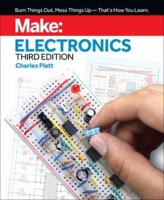Publisher's Synopsis
There is significant current interest in new technologies for IC (Integrated Circuit) cooling, driven by the rapid increase in power densities in ICs and the trend towards high-density electronic packaging for applications throughout civilian and military markets. In accordance with Moore's Law, the number of transistors on 6 Intel Pentium microprocessors has increased from 7.5 x10 in 1997 (Pentium II) to 6 55 x10 in 2002 (Pentium 4). Considering the rapid increase in the integration density, thermal management must be well designed to ensure proper functionality of these high-speed, high-power chips. Forced air convection has been traditionally used to remove the heat through a finned heat sink and fan module. 2 Currently, with 82 W power dissipation rate, approximately 62 W/cm heat flux, from a Pentium 4 processor with 3.06 GHz core frequency, the noise generated from high rotating speed fans is approaching the limit of acceptable level for humans. However, the power dissipation from a single cost-performance chip is 2 expected to exceed 100 W/cm by the year 2005, when the air cooling has to be replaced by new cooling technologies. Among alternative cooling methods, the two-phase microchannel heat sink is one of the most promising solutions. Understanding the boiling process and the two-phase flow behavior in microchannels is the key to successful implementation of such a device.











